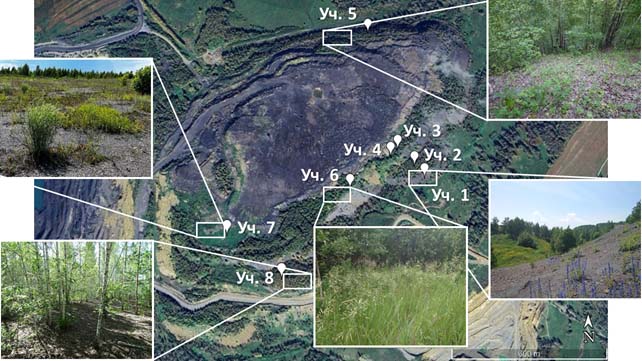Litter formation and its carbon deposition capacity in forest and grass man-made ecosystems of anthracite mining coal mining spoils
DOI:
https://doi.org/10.31251/pos.v8i1.309Keywords:
reclamation; embryozems; soils of man-made landscapes; carbon sequestration; Technosol.Abstract
The aim of the study was to identify litter formation features and assess litter carbon- sequestration ability in the forest and grass ecosystems of man-made landscapes of the Gorlovka anthracite deposit.
Location and time of the study. The outer anthracite mining spoil of the Gorlovka anthracite mine (54.568880, 83.588956), Novosibirsk region, Iskitimsky district, June-August 2024.
Methods. Litter sampling at the study sites was carried out using the envelope method as per the methodological recommendations for soil samples collection and analysis of the Unified National Monitoring System for Climatically Active Substances. A plastic cylinder with a diameter and height of 100 mm was used to collect the material. The litter samples were analyzed after drying to an air-dry state in the Laboratory of soil reclamation of the ISSA SB RAS. After cutting with scissors, more thorough dispersion with a vibrating ball mill and subsequent homogenization, litter carbon and nitrogen content was determined using a CHNS/O analyzer 2400 Series II Perkin Elmer. Statistical processing of the results was performed using Microsoft Excel and PAST v2.17 software packages.
Results. In the mining spoils ecosystems, due to the heterogeneity of edaphic conditions and longevity of spontaneous revegetation of the sites, the formed litter was characterized by heterogeneity in composition, structure and organic matter and carbon pools. The noted features of the litter were confined to certain types of embryozems and plants growing on them, which are grouped into pioneer, simple and complex forest and herbaceous communities. The minimum thickness (up to 1 cm) and pools of organic matter (up to 1,59 t/ha) were found in fragmentary litters of pioneer plant communities on initial embryozems. The litter of complex phytocenoses and grass ecosystems of turf embryozems was characterized by small thickness, but maximum pools of dry mass. The litter carbon content ranged widely (from 9,4 to 48,4%, with an average of 36,7%) and differed depending on the type and composition of plant communities and edaphic conditions. In general, carbon pools in the grass and forest litter of man-made mining spoils ecosystems ranged 0,26-3,26 t C/ha, increasing in a row of pioneer < simple herbaceous ≤ complex herbaceous < simple forest=complex forest communities. At the same time, nitrogen enrichment of the lower litter layers did not occur in the studied anthracite mining spoils most likely due to the poor development of biota.
Downloads

Downloads
Published
How to Cite
Issue
Section
License
Copyright (c) 2025 The Journal of Soils and Environment

This work is licensed under a Creative Commons Attribution 4.0 International License.






